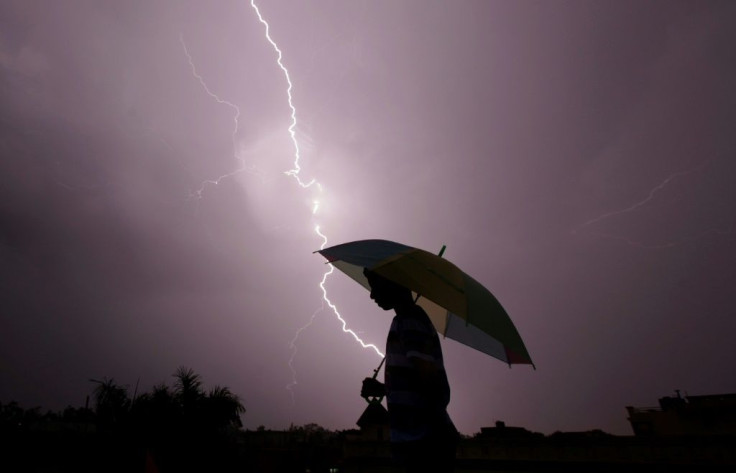Lightning Forensics: Researchers Identify Evidence Of Fatal Lightning Strike In Bones
KEY POINTS
- Identifying lightning fatalities rely primarily on soft tissue, not the bones
- Researchers conducted the first study to identify markers of lightning strike on human bones
- Climate change may increase the severity and incidence of lightning strikes
How do you know if someone died from a lightning strike if the body no longer has soft tissue? A team of researchers found a way to identify lightning strike fatalities even just by the skeletal remains.
Fatal lightning strikes are actually quite common in wild animals, livestock and even people, the University of the Witwatersrand, Johannesburg (Wits University) noted in a news release. And there is evidence that the changing climate may actually increase the severity and incidence of thunderstorms and lightning strikes. In India, for instance, the climate crisis is said to have triggered a spike in lightning strike deaths.
So far, it is estimated that 24,000 people die from lightnings strikes each year. To identify such fatalities, experts rely mostly on spotting the traumatic pattern on soft tissues such as the organs or the skin. But when only the skeletal remains of a suspected victim are left, "lightning death cannot be attributed," Wits University noted.
In a new study, published Wednesday in the journal Forensic Science International: Synergy, a multi-disciplinary team of researchers from Wits University, Northumbria University and the Nuclear Energy Corporation of South Africa looked for traumatic traces of a lightning strike in the human skeleton.
To do this, the researchers generated artificial lightning in a laboratory setting and applied it directly to human bone samples from the donated bodies of people who had died of natural causes.
"Generating such high impulse currents allowed us to mimic the effect of lightning passing through the skeleton," researchers Patrick Randolph-Quinney, Nicholas Bacci and Tanya Nadine Augustine wrote in an opinion piece on the Wits University website. "Natural lightning can often have significantly higher current levels, but this experimental setup gave us much greater control than trying to somehow place human tissue in the path of a natural lightning strike."
In the video, one can see the artificial lightning produced by a high-impulse current going through the human bone sample.
Researchers then cut the bone sample into thin slices and had a closer look at them via optical microscopy and micro-CT. Sure enough, the researchers saw a damage pattern that's "uniquely caused by short duration lightning current passing through its cells."
"This damage took the form of cracks radiating out from the centre of canals in the bone, or jumping irregularly between clusters of cells," the researchers explained in the opinion piece. "The overall pattern of damage looked very different when compared to other high energy trauma, such as that caused by burning in fire."
Images shared by Wits University shows the bone before the current was applied (left), during the passage of the current (middle), and after the current passage (right).
Scientists @WitsUniversity and @NorthumbriaUni find the smoking gun in forensic #lightning pathology - they can now identify whether someone has died from a fatal lightning strike by analysing their skeleton remains. #LightningSafety 1/4
— Wits_News (@Wits_News) November 3, 2021
Learn more: https://t.co/HhnDk76t3X pic.twitter.com/EwPznhAhz5
The researchers also compared the pattern to the ones in a bone sample from a giraffe that had been killed by lightning, and found that they were "identical" even if human and animal bones have a different "microstructure," Randolph-Quinney noted in the Wits University news release.
"Our research offers a new tool to study lightning fatality in real-world forensic cases," the researchers wrote in the opinion piece. "At a time when global climate change may be driving increases in the number and severity of thunderstorms and lightning strikes, this tool may sadly have to be called upon regularly in death investigation."
Apart from helping to identify victims of lightning strikes, however, the researchers' ultimate long-term aim is to help make the environment safer for the ones who are most at risk of lightning strikes.

© Copyright IBTimes 2025. All rights reserved.






















